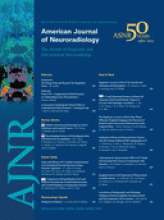SUMMARY:
NBIA characterizes a class of neurodegenerative diseases that feature a prominent extrapyramidal movement disorder, intellectual deterioration, and a characteristic deposition of iron in the basal ganglia. The diagnosis of NBIA is made on the basis of the combination of representative clinical features along with MR imaging evidence of iron accumulation. In many cases, confirmatory molecular genetic testing is now available as well. A number of new subtypes of NBIA have recently been described, with distinct neuroradiologic and clinical features. This article outlines the known subtypes of NBIA, delineates their clinical and radiographic features, and suggests an algorithm for evaluation.
ABBREVIATIONS:
- ACP
- aceruloplasminemia
- CNS
- central nervous system
- FAHN
- fatty acid hydroxylase-associated neurodegeneration
- INAD
- infantile neuroaxonal dystrophy
- KRS
- Kufor-Rakeb syndrome
- NAD
- neuroaxonal dystrophy
- NBIA
- neurodegeneration with brain iron accumulation
- NFT
- neuroferritinopathy
- PKAN
- pantothenate kinase-associated neurodegeneration
- PLAN
- phospholipase-associated neurodegeneration
- SENDA
- static encephalopathy of childhood with neurodegeneration in adulthood
- WSS
- Woodhouse-Sakati syndrome
- © 2012 by American Journal of Neuroradiology
Indicates open access to non-subscribers at www.ajnr.org












